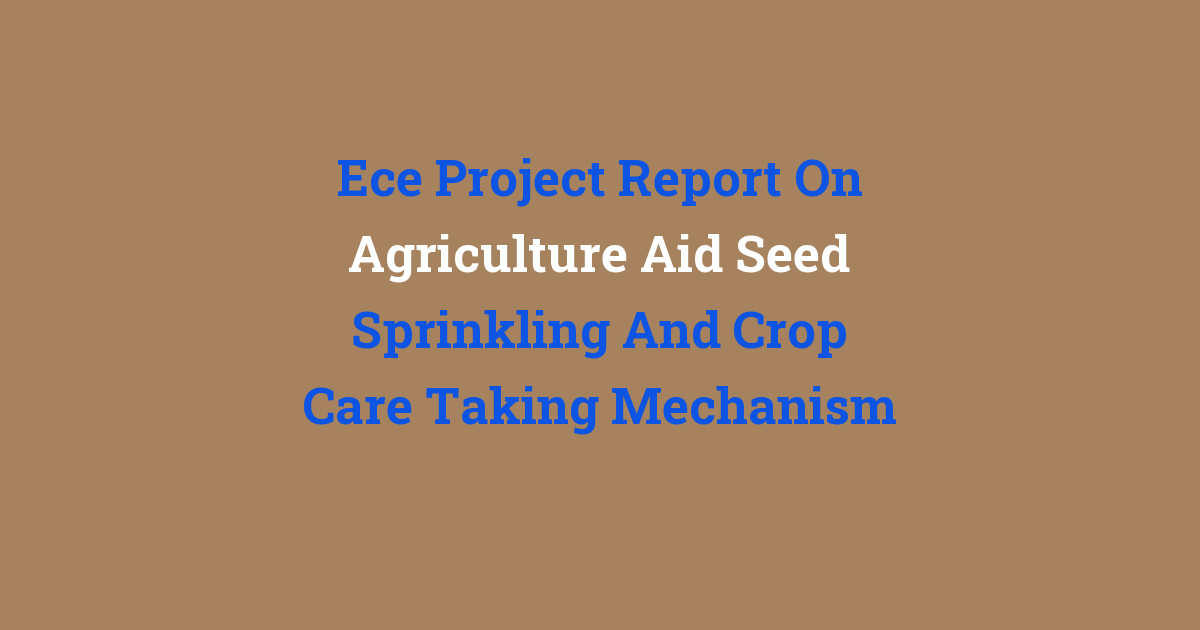The project report focuses on the use of a seed sprinkling and crop care taking mechanism designed to aid agriculture in the electronic and communication engineering field.
Introduction
As a student pursuing a Bachelor of Technology in Electronics and Communication Engineering in India, I have chosen to work on a project that focuses on agriculture aid in seed sprinkling and crop care taking mechanism. Agriculture is the backbone of our country, and technological advancements in this field can greatly benefit farmers and increase crop yields.
Problem Statement
The traditional methods of seed sprinkling and crop care taking in agriculture require a lot of manual labor and are not very efficient. Farmers often face challenges such as uneven distribution of seeds, inadequate fertilization, and difficulty in monitoring and caring for their crops. This results in reduced crop yields and lower profits for farmers.
Existing System
The existing system for seed sprinkling and crop care taking involves manual labor and outdated equipment. Farmers have to walk through their fields, sprinkling seeds by hand and applying fertilizers manually. This process is time-consuming, labor-intensive, and prone to errors. Additionally, monitoring and caring for the crops is challenging, as farmers have to physically inspect each plant for pests, diseases, and nutrient deficiencies.
Disadvantages
There are several disadvantages to the existing system of seed sprinkling and crop care taking in agriculture. Some of the key drawbacks include:
- High labor costs
- Inefficient seed distribution
- Inadequate fertilization
- Poor monitoring and care of crops
- Limited crop yields
Proposed System
My proposed system for agriculture aid in seed sprinkling and crop care taking involves the development of a mechanized device that can automatically sprinkle seeds, apply fertilizers, and monitor and care for crops. The system will be equipped with sensors and actuators that can detect soil conditions, nutrient levels, and pest infestations, allowing farmers to make data-driven decisions for better crop management.
Advantages
The proposed system offers several advantages over the existing manual methods of seed sprinkling and crop care taking. Some of the key benefits include:
- Reduced labor costs
- Efficient seed distribution
- Optimal fertilization
- Automated monitoring and care of crops
- Increased crop yields
Features
The agriculture aid seed sprinkling and crop care taking mechanism will be designed with the following features:
- Automatic seed sprinkling
- Automated fertilizer application
- Sensor-based monitoring of soil conditions
- Real-time data analysis for crop management
- Mobile app integration for remote monitoring
Conclusion
In conclusion, the agriculture aid seed sprinkling and crop care taking mechanism proposed in this project has the potential to revolutionize the way farmers manage their crops. By automating seed sprinkling, fertilizer application, and crop monitoring, farmers can increase efficiency, reduce labor costs, and improve crop yields. This project has the potential to make a significant impact on the agricultural sector in India and improve the livelihoods of farmers across the country.

